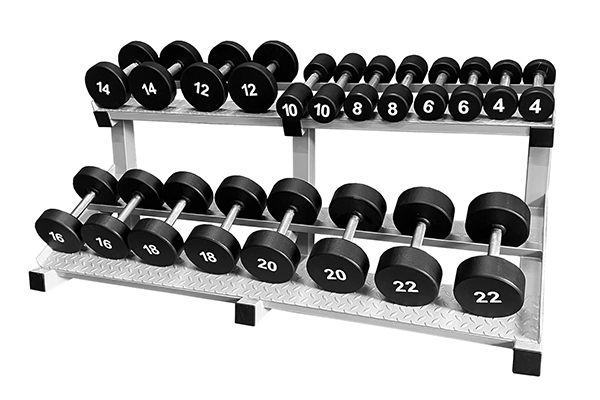Hongxing is a company specializing in the production of fitness equipment. If you want to buy commercial outdoor gym equipment, you can visit the website:https://www.bmyfitness.com/
Navigating the Dumbbell Maze: Selecting the Right Weight for Your Fitness Goals
In the realm of strength training and fitness, dumbbells stand as versatile tools that can be used to target a wide range of muscle groups and achieve diverse fitness goals. However, selecting the appropriate weight for your dumbbells can be a daunting task, especially for beginners or those returning to exercise after a break. This article aims to provide insights into selecting the right dumbbell weight based on your fitness level, goals, and exercise routine.
Understanding Your Fitness Level
Before selecting dumbbells, it is crucial to assess your current fitness level. This can be done by considering your overall strength, experience with strength training, and any physical limitations you may have. For beginners, starting with lighter weights is recommended to allow for proper form development and prevent injury.

Establishing Fitness Goals
Your fitness goals play a significant role in dumbbell weight selection. If your primary goal is muscle growth, you will likely need to use heavier weights that challenge your muscles and stimulate growth. Conversely, if your goal is endurance or toning, lighter weights can be more appropriate.
Considering Exercise Selection
The type of exercises you plan to perform with dumbbells also influences weight selection. Compound exercises, such as squats, deadlifts, and bench presses, typically involve larger muscle groups and require heavier weights. Isolation exercises, such as bicep curls and tricep extensions, focus on smaller muscle groups and may require lighter weights.
Starting with Lighter Weights
As a general rule, it is advisable to start with lighter weights than you think you can handle. This allows you to focus on proper form and technique, reducing the risk of injury and ensuring that you are activating the correct muscles. As you progress, you can gradually increase the weight as your strength and endurance improve.
Listening to Your Body
Pay close attention to your body’s signals during exercise. If you experience fatigue or pain, it may be an indication that the weight is too heavy. In such cases, it is advisable to reduce the weight or take a break to prevent overexertion and injury.
Seeking Guidance
If you are unsure about the appropriate dumbbell weight for your fitness level, goals, and exercise routine, consulting with a certified personal trainer can provide valuable guidance. Personal trainers can assess your strength, identify your goals, and design a personalized workout plan tailored to your individual needs.
Additional Tips for Dumbbell Usage
When using dumbbells, it is important to maintain proper form throughout each exercise to maximize effectiveness and minimize injury risk. Here are some additional tips for dumbbell usage:
-
Warm-up: Before lifting dumbbells, warm up your muscles with light cardio or dynamic stretches to prepare them for exercise.
-
Maintain proper grip: Grip the dumbbells firmly with a neutral wrist position to prevent strain and injury.
-
Control the weight: Lift the dumbbells in a controlled manner, avoiding sudden movements or excessive jerking.
-
Breathe properly: Exhale as you exert force and inhale as you lower the weight.
-
Cool down: After your dumbbell workout, cool down with static stretches to promote muscle recovery.
Conclusion
Selecting the right dumbbell weight is essential for optimizing your workouts, achieving your fitness goals, and preventing injury. By understanding your fitness level, establishing clear goals, considering exercise selection, starting with lighter weights, listening to your body, and seeking guidance when needed, you can make informed decisions about dumbbell weight selection and embark on a safe and effective fitness journey.
Post time: 11-22-2023



